
Want to learn more? This National Geographic Book on Owls is a great read!
The most common of these is the Great Horned Owl with the highest counts recorded.
This mid-western state has a continental climate, meaning that its seasons can be very extreme.
With really hot summers and really frigid winters. In Kansas there are 28 different state park areas and 5 different national parks across the state.
Kansas is a very popular state for bird watching as it has a very highly recorded 460 bird species.
Now that we’ve spoken a little about the state, lets have a look at the owls you can find in Kansas in some more detail.
Want to attract Owls to your yard? Take a look at our article!
What Owls can be seen in Kansas?
Table of Contents
1. Barn Owl
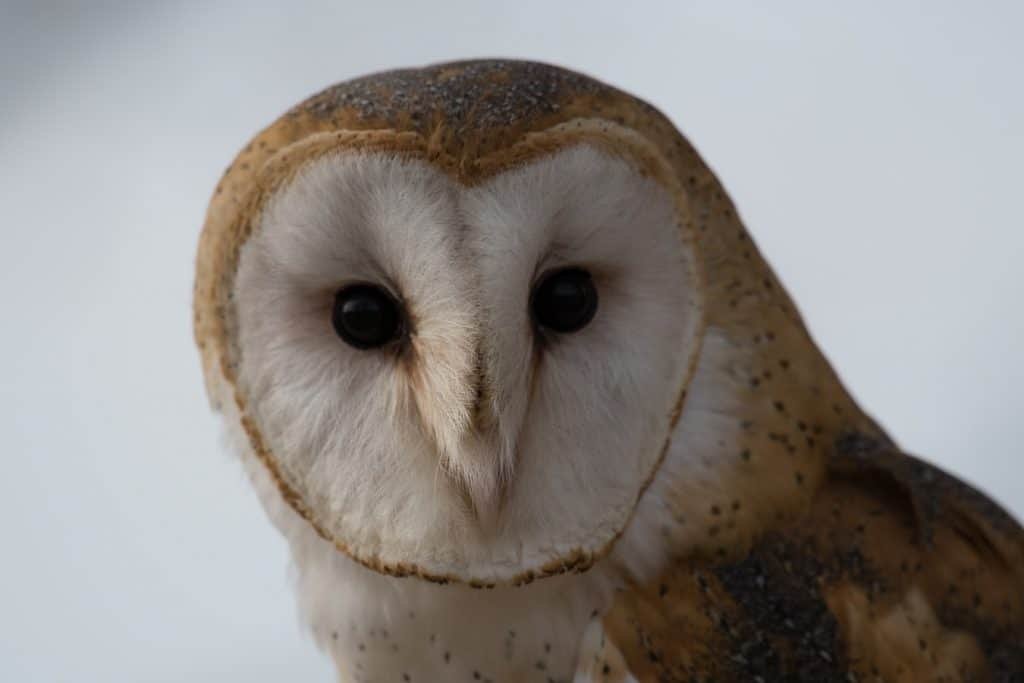
Wingspan
107 to 110 cm
Weight
430 – 620 g
Life Expectancy
Up to 4 years
Diet
Voles, Shrews & Mice
Barn owl’s heads and wings are covered with buff and grey feathers and they have a medium sized stocky body.
During the night-time and certain lights these feathers on their wings can appear to be completely white.
These birds have a wide range going from southern Canada to across 48 states in the USA. Barn Owls form breeding pairs that mate for life and remain monogamous during the breeding season.
The female is the one who solely incubates the eggs whilst the male brings her food. Males will also spend most of their time surveying their territory so that they can defend it.
These birds are very territorial to other bird species, but they have been known to happily share hunting grounds with different Barn Owls.
You are most likely to see one of these birds hunting over open grasslands during the night.
Barn Owls are year-round residents in the state of Kansas and can be seen in all regions of the state.
Whilst the distribution of sightings is fairly evenly spread there is a higher recorded number of sightings in the central regions of the state.
2. Eastern Screech Owl
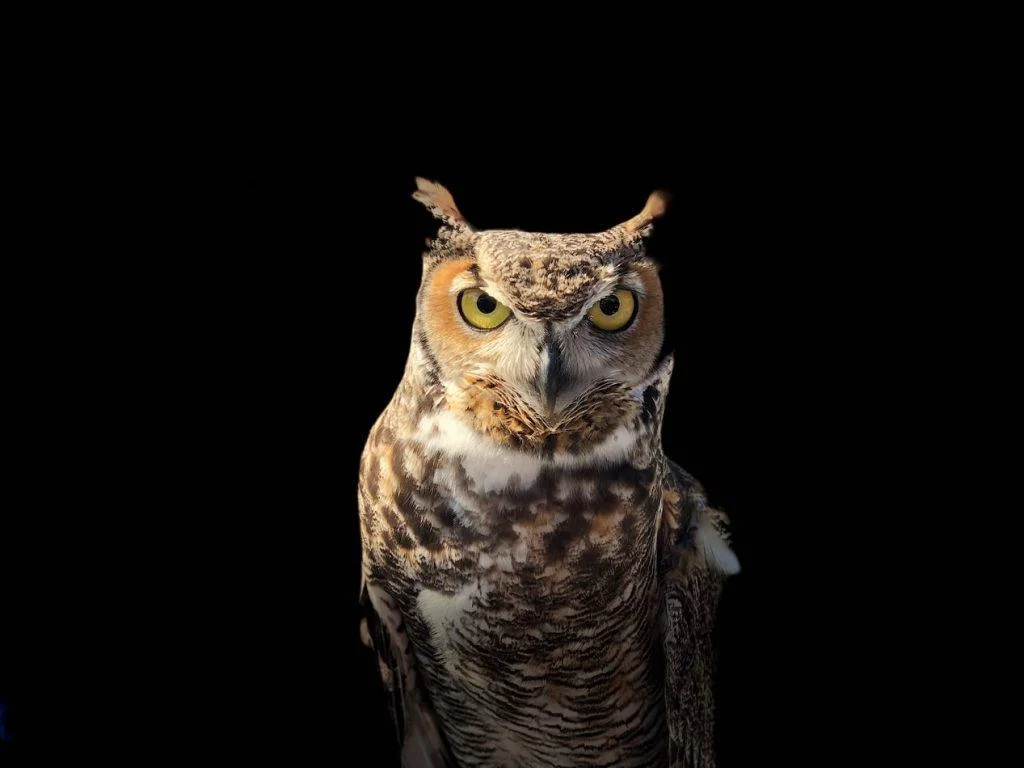
Wingspan
46 to 61 cm
Weight
160 g
Life Expectancy
14 years
Diet
Rats, Squirrels, Rabbits & Skunks
The Eastern Screech-Owl has a stocky body covered in thick grey feathers, they are similar in appearance to their counterpart, the Western Screech-owl.
These owls are not monogamous during the breeding season, but males will roost with only one female and spend his time defending the one brood of eggs.
These pairings are also not a long-term thing and will change every year. Females will incubate the eggs and stay in the nest for most of the season, whilst males spend most of their time defending their territory.
In recent years, these owls have increased their nesting range to suburban areas and have successfully bred in city parks.
You are most likely to see them in dense forest areas, they particularly benefit from ones with man made bird boxes.
Kansas is on the edge of this owl’s range, but they can still be seen in the state throughout the year and in all of its regions.
The have a high number of recorded sightings in the state but most have been in the central areas of Kansas.
3. Great Horned Owl
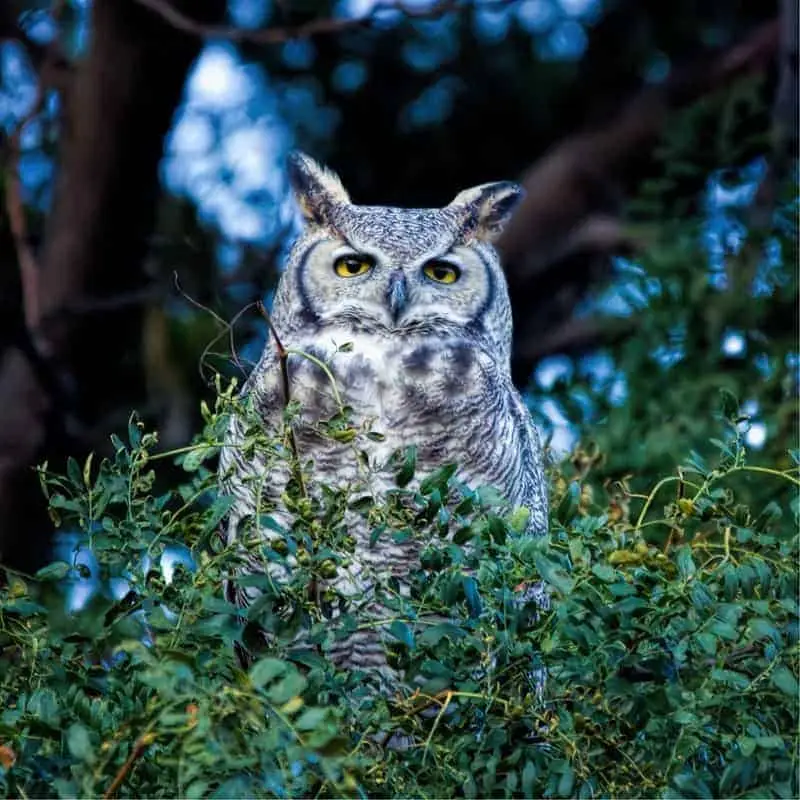
Wingspan
~140cm
Weight
1.4 kg
Life Expectancy
28 years old
Diet
Squirrels, Rabbits & Skunks
These owls do not actually have horns but instead have large pointed ears that look like horns.
Their large bodies are covered in feathers of greys and browns that are very thickly layered.
Great Horned Owls will form breeding pairs that will stay close to each other outside of the breeding season.
Most of these breeding pairs are long term as these owls appear to mate for life. They remain monogamous during mating seasons.
Both members of the breeding pair will defend their territory with a series of sharp hoots and females are as defensive as the males.
In fact, females are more defensive than males during the breeding seasons.
Fights will often break out between these owls and breeding pairs have been known to kill members of their species that stray too close to their nests.
Great Horned Owls are also often harassed by smaller bird species that try to get them to abandon their nest and their eggs.
As you may expect from their extensive range, this owl is a permanent resident of Kansas and can be seen in all areas of the state.
They are most active in their breeding seasons and most of the recorded sightings of this bird are in the western half of the state.
4. Northern Saw-Whet Owl
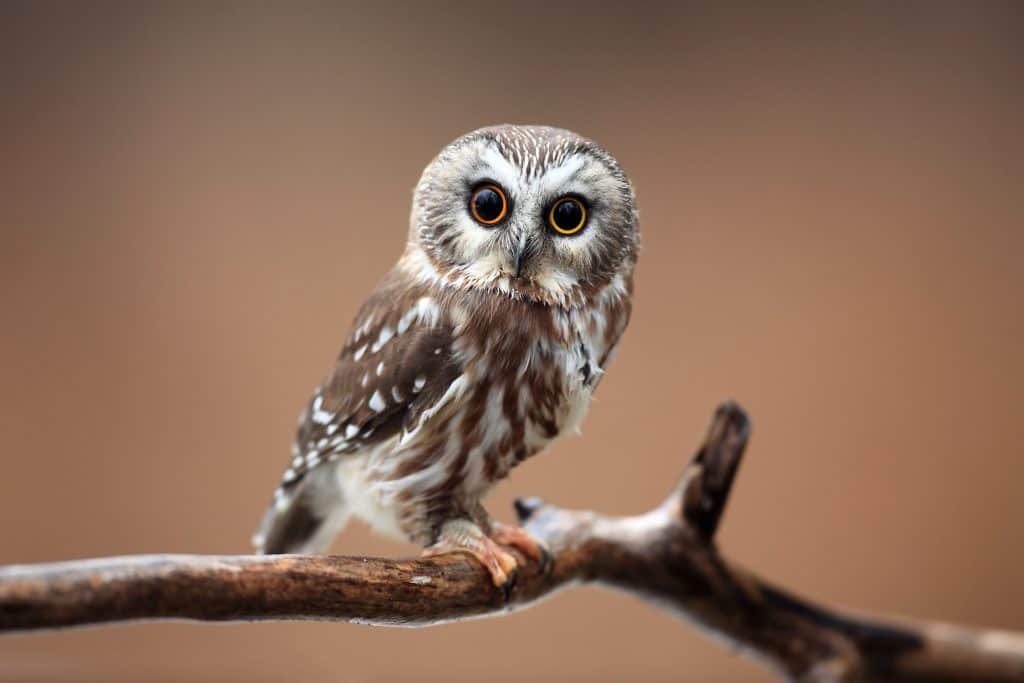
Wingspan
40 - 60 cm
Weight
100 g
Life Expectancy
7 years
Diet
Small birds, young squirrels, voles & shrews
The Northern Saw-whet Owl is small in size for an owl and its body is covered in deep brown feathers.
These small owls will make their nests in dense wooded areas and roost throughout the day like many other owl species.
These birds are primarily monogamous and will form breeding pairs, however, some males have been recorded to mate with several individuals each year.
These will often stay together outside of the breeding season to help each other defend their territory, but they don’t appear to be long term pairings although it is not confirmed.
You will hear their distinct too-too-too mating call throughout the breeding season, which is from the end of January to the beginning of May.
A male will circle around any female that enters his territory 20 times before moving down to her and gifting her with a prey item.
They prey item is most commonly a rodent such as a lemming or a mouse. These birds need to be careful when hunting, particularly at night, as they are often preyed upon by larger species of owls.
These owls can be seen in all areas of Kansas, but they are not year-round birds and can only be seen outside of their breeding seasons.
They are most common in the winter months with most of the recorded sightings of this bird being along the eastern border of the state.
5. Short-Eared Owl
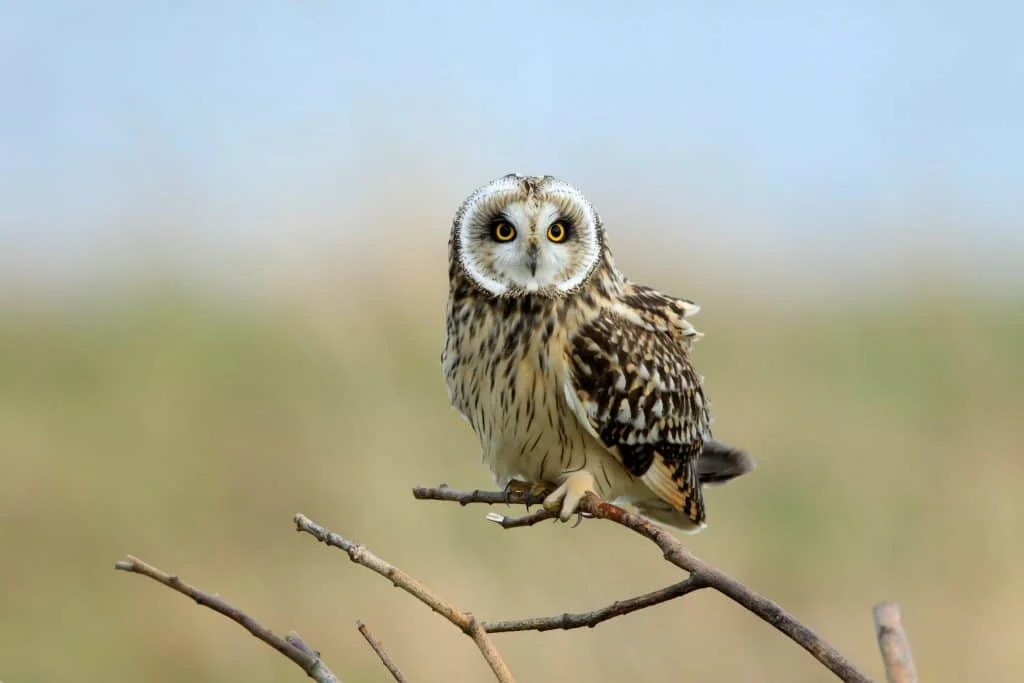
Wingspan
85 to 110 cm
Weight
206–475 g
Life Expectancy
4-12 years
Diet
Voles, Mice, Squirrels
Short-eared owls, in contrast to the Long-eared Owl, do not have any visible tufts which is where they got their name from.
They are covered in mostly brown feathers but have occasional small sections of white feathers on their bellies and wings.
These owls will hunt throughout open grassland areas and will sometimes hunt in both the day and the night.
The open areas make it easier for them to spot and swoop down to their prey. Short-eared owls form breeding pairs, but not a lot is known about these breeding pairs, although they don’t appear to mate for life.
They remain monogamous during the breeding season and males will help females with raising the brood.
These owls make their nests in areas of tall grass rather than trees and will only roost at higher elevations during the colder months.
Females remain at the nest, incubating the eggs and males will defend their territory with a series of harsh calls.
They also bring food to the females. Short-Eared Owls will often form loose colonies of lots of individuals that stay near each other during the breeding season as well as the rest of the year.
These birds can be year-round residents in the state, but they are most commonly found in Kansas outside of their breeding seasons.
They can be seen in all regions of the state and most of the recorded sightings have been in the eastern half of the state.
6. Long Eared Owl
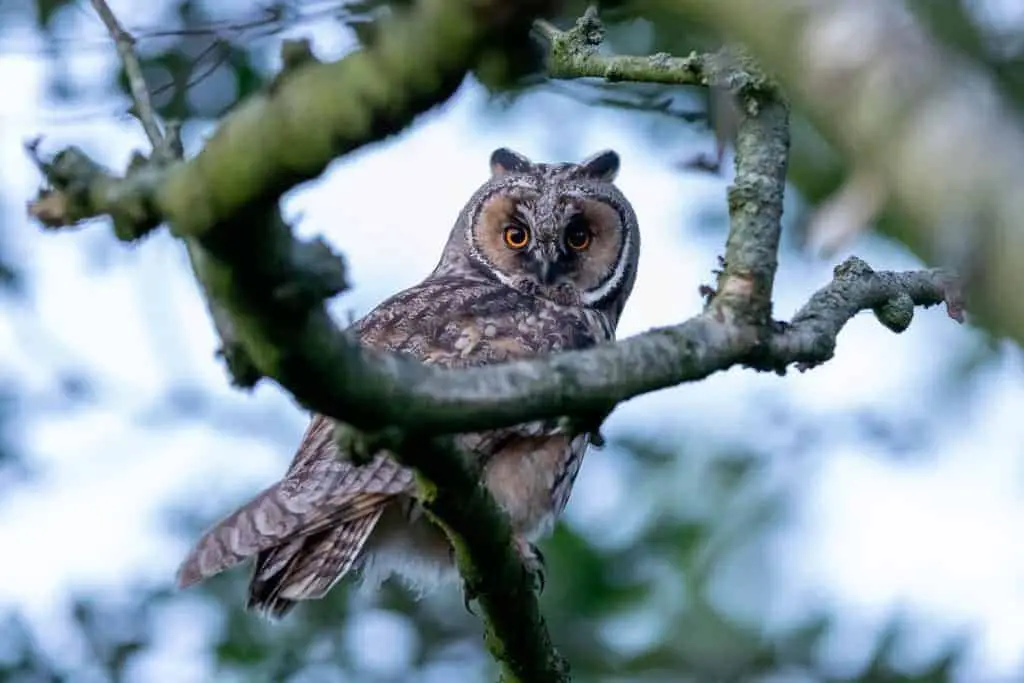
Wingspan
90 to 100cm
Weight
250 g
Life Expectancy
4 years
Diet
Small mammals, mice, rats & rabbits
The Long-Eared Owl unsurprisingly gets its name from its large, long and prominent ear tufts.
They have orange faces and their bodies are covered with grey and brown feathers and can often be mistaken for a Great Horned Owl.
These owls will form loose colonies of about 100 individuals, and they like to make their nests in dense woodlands.
During the breeding season these colonies will not roost together, but they will still nest near each other within their territories and the colonies reduce to about 50 individuals.
These birds are monogamous during the breeding season and form pairing to help raise the brood.
It is unknown as to whether these breeding pairs stay together in the long term or if they change every year.
Males perform a series of complex, zigzag flights whilst producing a mating call when they are trying to court a female.
The Long-eared owl is only present in Kansas outside of its breeding seasons but can be seen in all regions of the state.
They are most common in the winter and most of the recorded sightings of this bird have been in the eastern half of the state.
7. Burrowing Owl
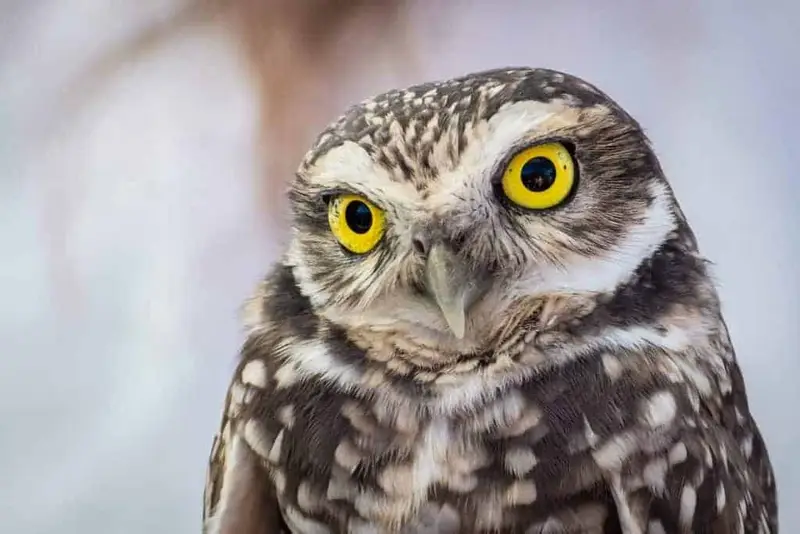
Wingspan
51-61 cm
Weight
140-240 g
Life Expectancy
10 years
Diet
Large Insects and Small Rodents
This small species of owl has brown and white feathers, many of these owls have a large white patch of feathers on their belly.
Burrowing Owls form loose colonies with a large number of individuals, and they stay together during the breeding seasons.
Whilst it is not known whether they form long term breeding pairs, it is known that they remain monogamous during the mating season.
After courtship, females stay in the burrow to protect the eggs whilst males defend the territory using their unique calls and wing displays.
These birds hunt over open areas of grasslands and have been observed hunting during the day and the night, they are much more active during their breeding seasons.
You can see these owls throughout all regions of Kansas state, but they are only seen in Kansas during their breeding seasons.
Most of the sightings of this owl have been recorded along the western border of the state.
8. Barred Owl
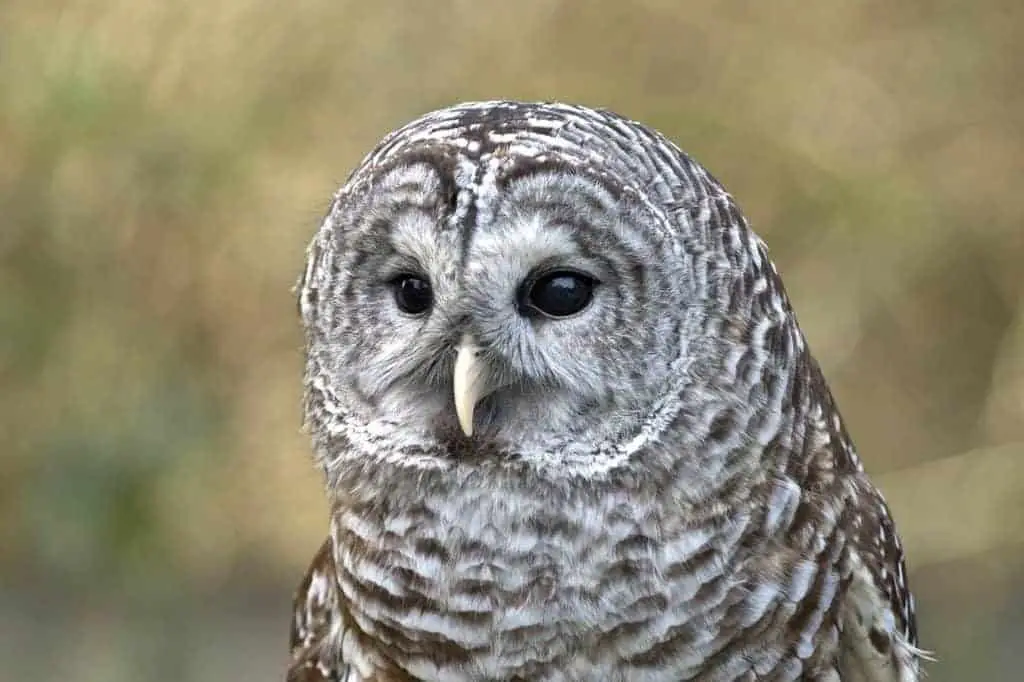
Wingspan
96-125 cm
Weight
468-1,150 g
Life Expectancy
10-23 years
Diet
Small mammals
Barred Owls are a large and stocky species of owl and they are covered with brown and white barred feathers.
These owls will stay in areas close to bodies of water, if they are able to, and can be found nesting in a variety of woodland areas.
Barred Owls are very territorial and remain so throughout the year, females are the more aggressive ones during the breeding season. They have been observed using a kind of flight attack where they will collide into other birds, talons first.
These birds are monogamous and are believed to mate for life.
They will raise a single brood of eggs together and if there is a predator, one parent will leave the nest to cause a noisy distraction and prevent the young from being attacked.
Barred Owls can be seen in Kansas throughout the year, but their range only extends through the eastern half of the state.
They are most commonly seen during their breeding seasons and most of the sightings have been recorded in the north east of the state.

More Articles.
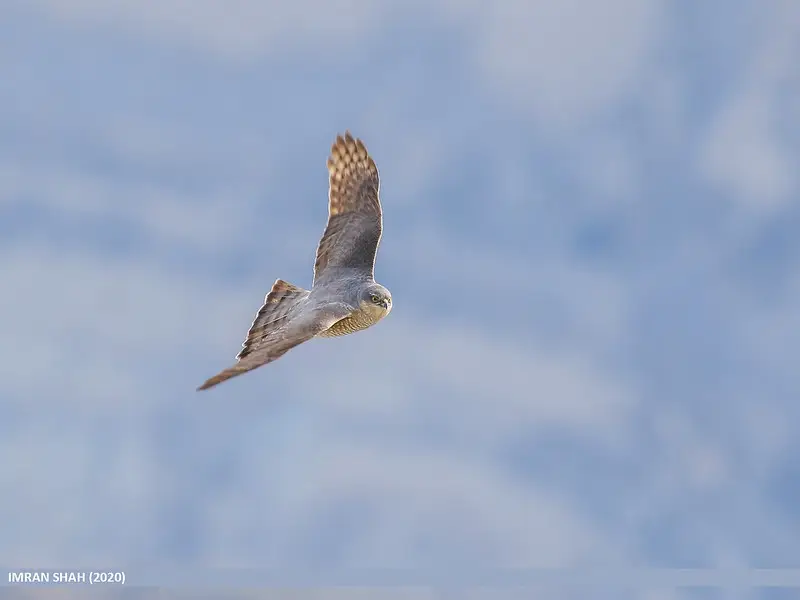
What Hawks can you see in Spain?(3 Species with Pictures & Sounds)
What Hawks can you see in Spain? There are 3 different species of Hawks that

Birds are known to come in many different colors. Even birds of a similar species
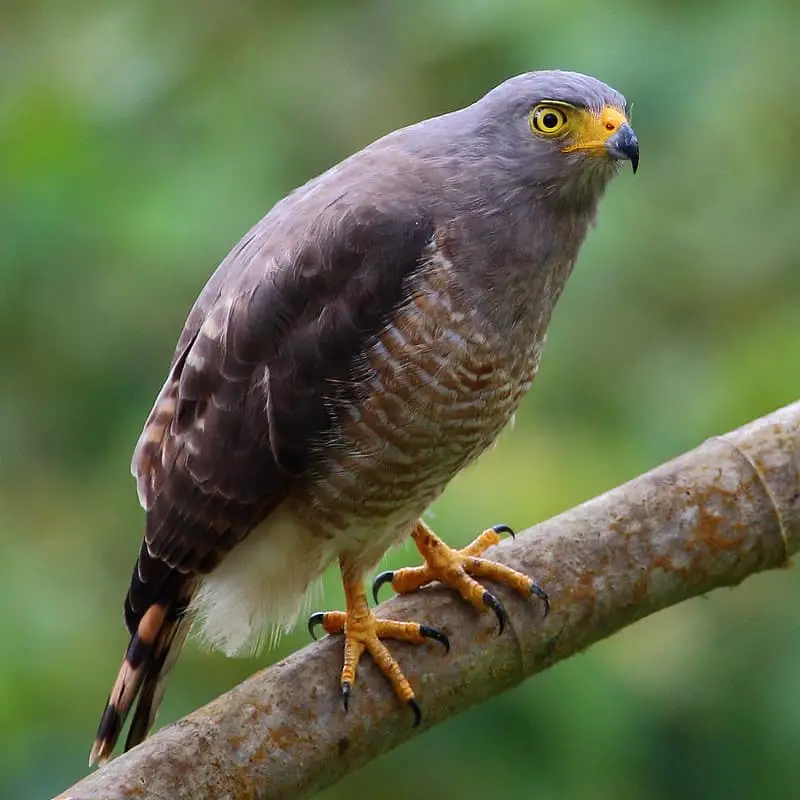
Differences between Hawks, Falcons and Eagles (8 Differences with Pictures and Sounds)
The difference between Hawks, Falcons, and Eagles can be difficult to spot for bird watchers

About Us
We are avid bird-watchers who recently retired, allowing us more time to travel the world. Fortunately, we have managed to visit numerous countries around Europe, Asia, and America. Watching and photographing birds has been a passion for many years and we are making the most of the extra time on our hands!
